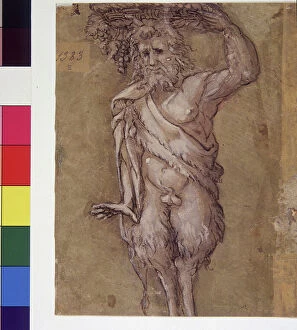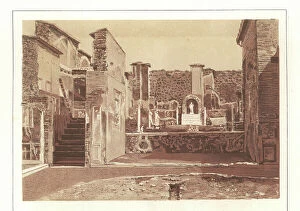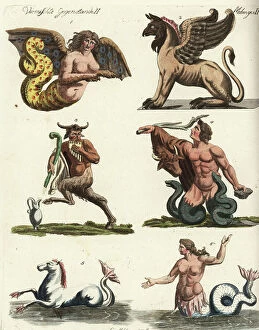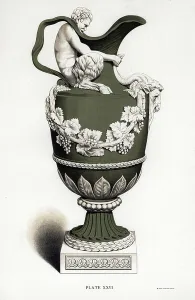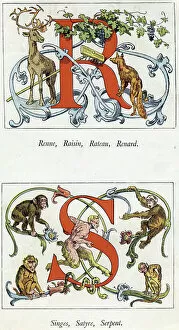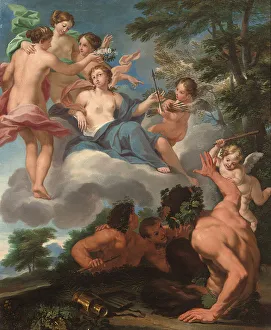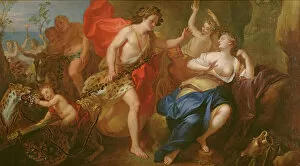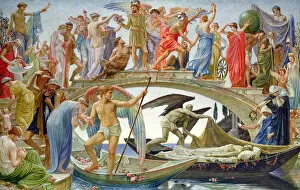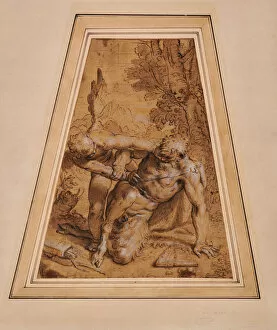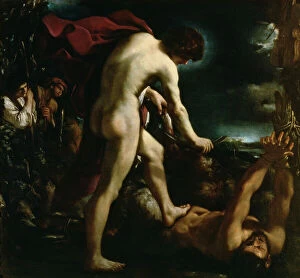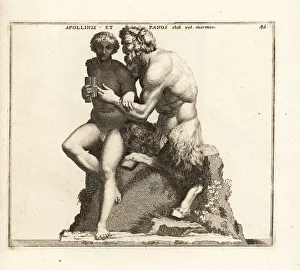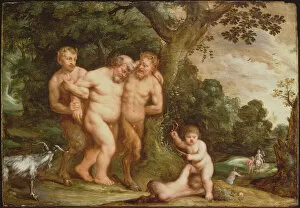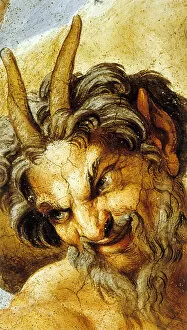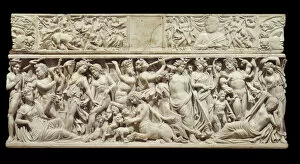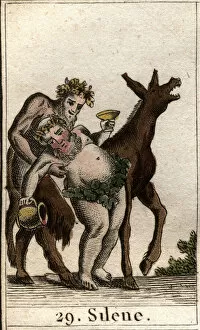Satyre Collection
"Satyre: A Mythical Creature of Mischief and Sensuality" In the realm of ancient mythology, Silene Satyre emerges as a prominent figure
All Professionally Made to Order for Quick Shipping
"Satyre: A Mythical Creature of Mischief and Sensuality" In the realm of ancient mythology, Silene Satyre emerges as a prominent figure. Depicted in the mesmerizing 1838 oil on canvas painting, he stands tall as the father of Dionysus, exuding an aura of mystery and power. The enchantment continues with an intriguing engraving found in "Alphabet, " printed by Charles Unsinger for Alphonse Lemerre in Paris. The letter R brings forth vivid imagery: Reindeer gracefully prancing through wintry landscapes, grapes bursting with lusciousness, a rake diligently tending to nature's bounty, and a sly fox lurking amidst it all. And there among them is the mischievous Satyre himself, adding his own touch of whimsy to this artistic masterpiece. Further exploration leads us to T. De Bry's "Alphabet, " where Letter Z comes alive with an unexpected twist. Here we find a naked woman captivatingly intertwined with a satyre—a fusion of beauty and wildness that captivates our imagination. Traveling back through time, we encounter an Attic plate from 520 BC adorned with red figures created by Epictetos. This remarkable piece showcases a satyre holding two pipes while using his erect sex to hang his case—an embodiment of both musical prowess and unabashed sensuality. Moving forward into more recent centuries, engravings such as "Satyr undresses a Nymph" (1804) evoke scenes filled with passion and desire. Meanwhile, Apollo's fateful encounter with Marsyas unfolds before our eyes in paintings like "Apollo and Marsyas" (16th century) or "The Flaying of Marsyas" (oil on wood panel). These tales remind us that even gods are not immune to the consequences their actions may bring.

